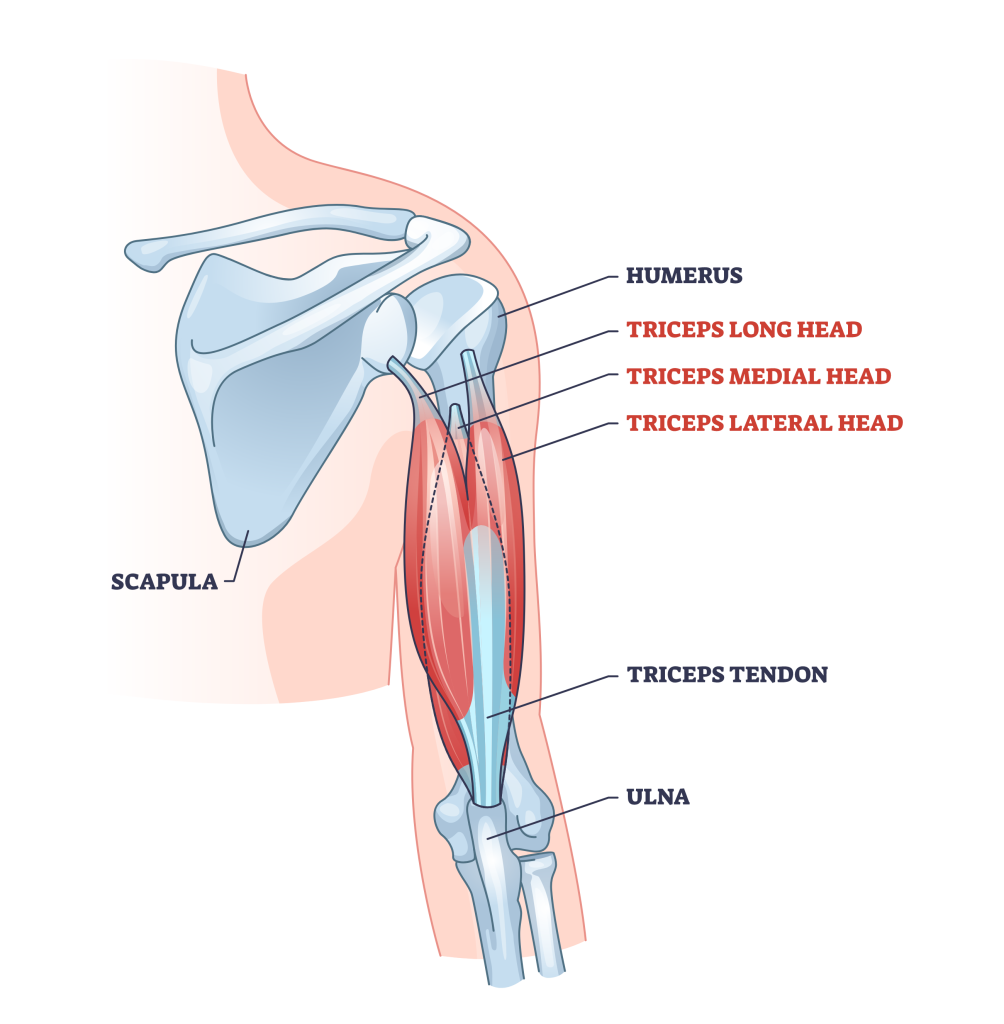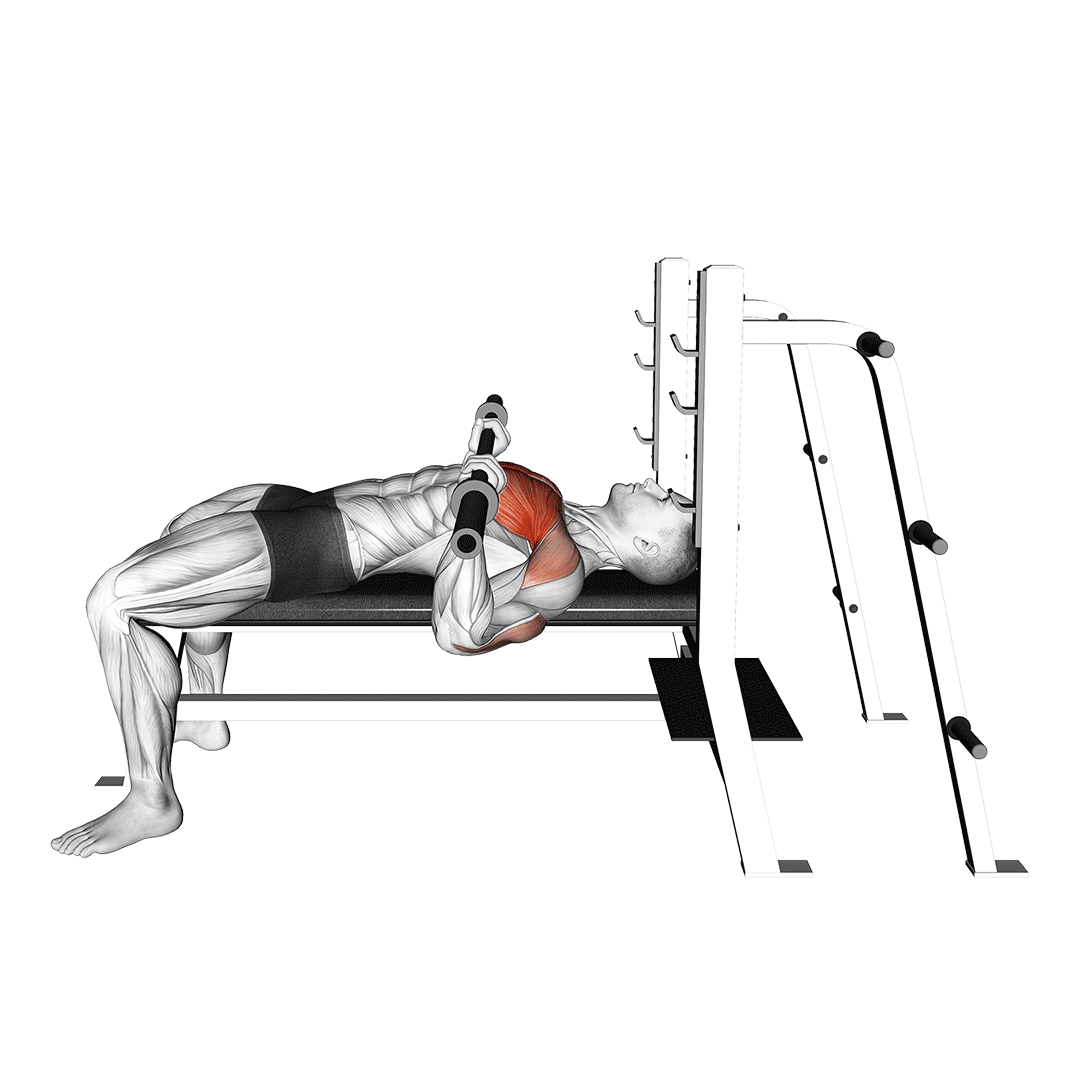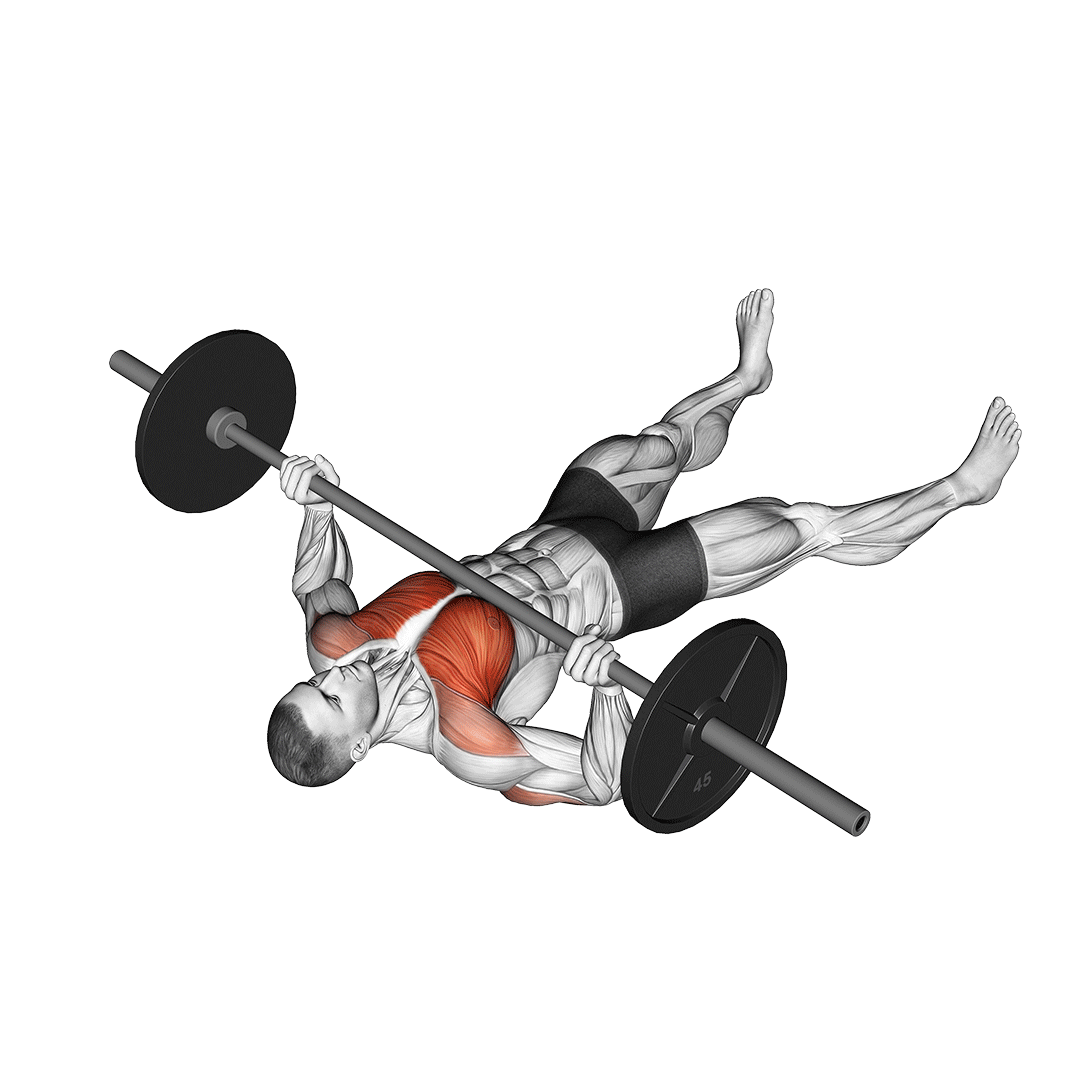What are the Benefits of Doing Floor Presses?
Floor presses are performed for a wide variety of benefits, ranging from technique-specific powerlifting drills to simple triceps hypertrophy.
More specifically:
- Excellent for Building Strength and Mass in the Triceps
- Corrects Upper Range Bench Press Issues
- Far Lower Risk of Acute Injury
- Compatible with Certain Types of Shoulder Injuries
- Greater Loading and Volume Capacity
- Requires Less Equipment to Perform
Benefits of Doing Floor Presses
Excellent for Building Strength and Mass in the Triceps
The main advantage to doing floor presses is their ability to maximize triceps loading and volume in a biomechanically advantageous way - more so than the conventional bench press.
Because the triceps are the principal muscle responsible for much of the force throughout the entire exercise, they also receive the most benefit from performing floor presses.

With how much weight can be loaded onto a floor press, this provides ample opportunity for not only larger triceps, but enhanced triceps-derived pressing strength as a whole.
For the best results, floor presses can be made even more triceps-centric by adopting a slightly narrower hand positioning, almost as if performing a close grip bench press.
Corrects Upper Range Bench Press Issues
Occasionally, lifters may develop sticking points, weakness or instability when performing the conventional barbell bench press.
Although these issues are more common during the lower half of the movement’s range, problems during “lock out” or extension of the elbows are also possible.

Fortunately, the floor press provides a safe and highly effective way of only performing this range of the bench press without needing to actually complete a full repetition - saving energy and time while allowing for far greater volume within the upper range itself.
This advantage of technique refinement can be further enhanced by using resistance bands to increase tension near the top of the movement, doubling its effectiveness as a specificity tool.
Far Lower Risk of Acute Injury
In exercises like the bench press or dip, failing a repetition can lead to acute injury without proper preparation.
Though most forms of horizontal press are considerably safe, the floor press is “self-spotting” in the sense that the weight plates will collide with the floor in the event that the lifter fails a repetition.
This practically eliminates the risk of untoward incidents (outside of those caused by poor form or overuse), making the floor press safer to reach absolute muscular failure with.
Compatible with Certain Types of Shoulder Injuries
In comparison to dips or the barbell bench press, the floor press is considerably less taxing on the shoulder joints and can even be performed by individuals with a history of shoulder injuries - depending on the nature of said injuries.

While there will nonetheless still be a vertical distribution of load and pressure into the shoulder joint, far less rotation of the rotator cuff and the shoulder joint itself is present, as the bottom half of the movement is entirely removed.
Remember to always speak to a medical professional prior to training a previously injured joint. The floor press is indeed safer and less impactful on the shoulder joints, but that doesn’t mean that your specific case of shoulder injury won’t be aggravated.
Greater Loading and Volume Capacity
Because the floor press features a comparatively short range of motion, far less energy is expended by completing this ROM.
Less energy spent equates to the muscles being able to divert more towards a greater volume of repetitions, or even more weight if so needed.
Of course, the floor press is somewhat less advantageous for maximizing tonnage due to its lack of leg drive and pectoral engagement. However, in comparison to similar triceps-dominant exercises like the bench dip or close grip bench press, the floor press allows for far greater intensity with each set.
Requires Less Equipment to Perform
Whether out of necessity or preference, the floor press is far more convenient to perform as far as equipment requirements go.
A conventional bench press will require a weight rack and a flat bench - two objects that are often occupied in public gyms or otherwise expensive to purchase for home gym owners.
In comparison, the floor press only requires a barbell and a set of weight plates. Even in cases where a barbell is not present, the floor press can also be performed with a pair of dumbbells.
References
1. Brisebois MF, Rigby BR, Nichols DL. Physiological and Fitness Adaptations after Eight Weeks of High-Intensity Functional Training in Physically Inactive Adults. Sports (Basel). 2018 Nov 13;6(4):146. doi: 10.3390/sports6040146. PMID: 30428527; PMCID: PMC6316712.
2. Nuzzo, James L. PhD, CSCS. Time to Reconsider Foot and Leg Position During the Bench Press. Strength and Conditioning Journal 43(1):p 101-106, February 2021. | DOI: 10.1519/SSC.0000000000000562
